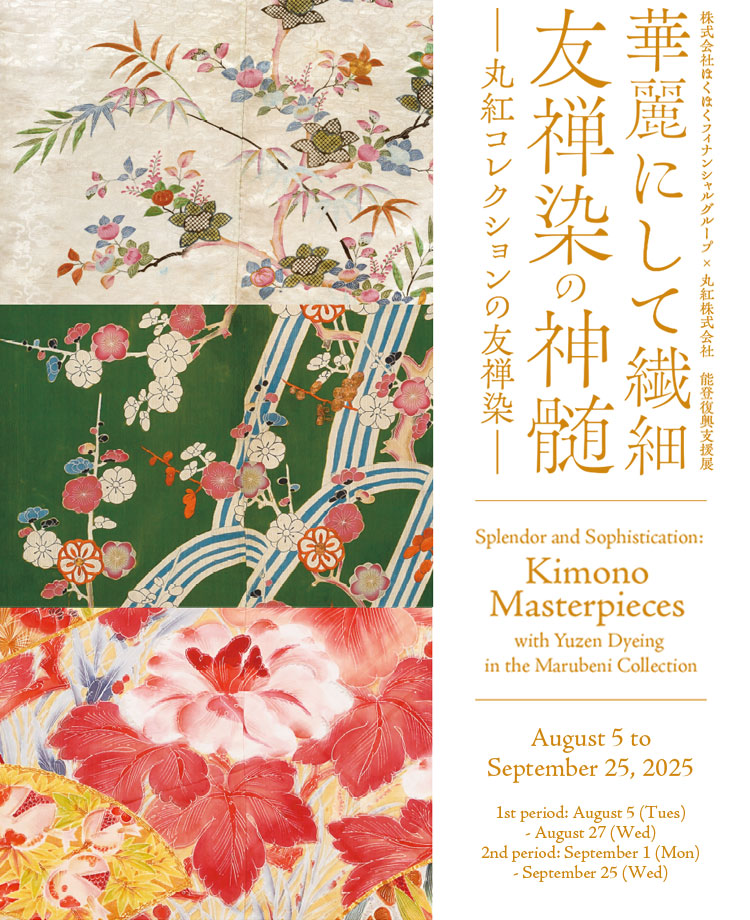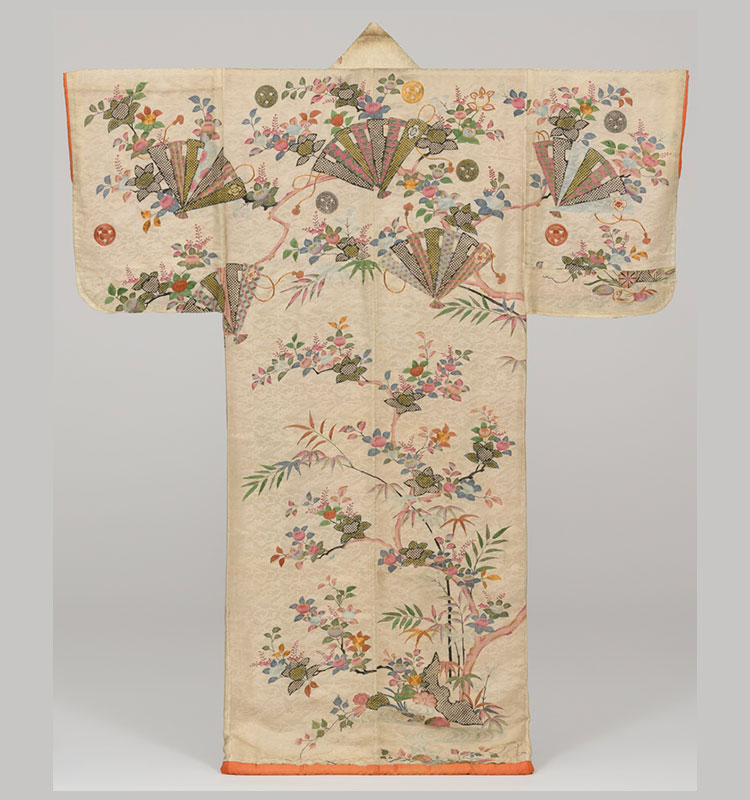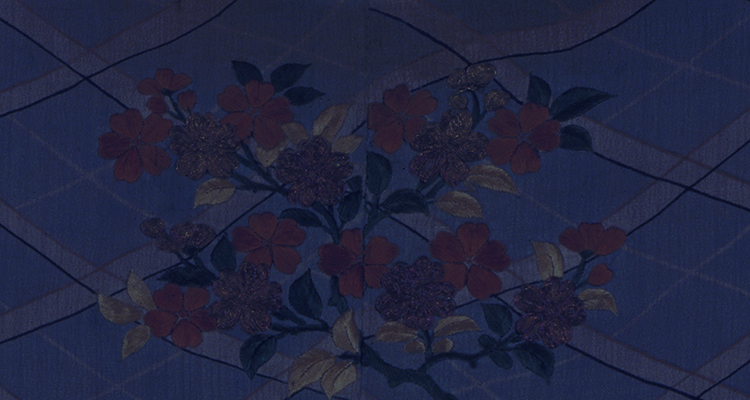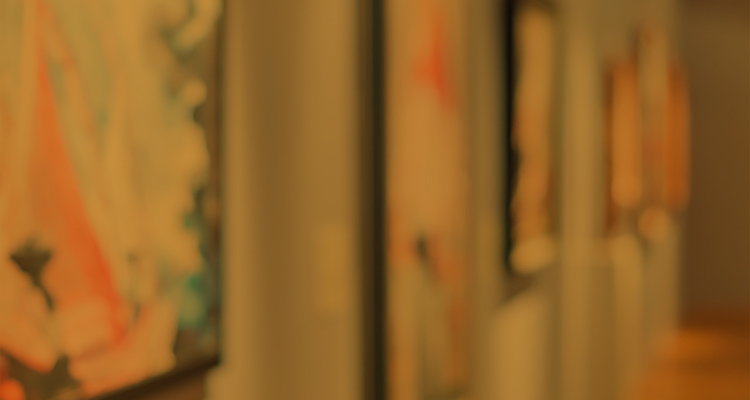

Exhibition
Marubeni Corporation and Hokuhoku Financial Group Inc.
Noto Peninsula Earthquake Recovery Support Exhibition
Splendor and Sophistication: Kimono Masterpieces with Yuzen Dyeing in the Marubeni Collection
Noto Peninsula Earthquake Recovery Support Exhibition
August 5 to September 25, 2025
Yuzen dyeing is a technique that first emerged in the late 17th century during Japan’s Edo period (1603–1868). Compared to previous dyeing techniques, which mainly involved shibori dyeing (tie-dyeing), yuzen dyeing enabled much more colorful and delicate expressions, enriching the styles of kimono typically worn by urban women. Though the popularity of yuzen dyeing reached its peak in the 18th century, the technique continued to evolve throughout the 19th and 20th centuries through the incorporation of new colors and techniques using synthetic dyes. Originally, yuzen dyeing techniques primarily developed in Kyoto, eventually spreading to Kanazawa in Hokuriku. There, artisans created unique yuzen-dyed hanging scrolls, with the craftsmanship used to create these works considered to be the pinnacle of yuzen dyeing. In the Meiji period (1868–1912), the technique used for these yuzen-dyed kakefuku (hanging scrolls) came to be known as “Kaga Yuzen,” and the scrolls became widely recognized as a traditional craft of the Hokuriku region that remains famous today. This exhibition features a selection of yuzen-dyed masterpieces primarily drawn from the Marubeni Collection, including kimonos and yuzen-dyed kakefuku from the Edo period, as well as several pieces created by yuzen artisans in the 20th century. Through this exhibition, visitors will trace the evolving splendor and sophistication of yuzen dyeing techniques and patterns, appreciating their beauty across the centuries.
Access
3F Marubeni Tokyo Head Office 4-2, Otemachi 1-chome, Chiyoda-ku, Tokyo, Japan
2-minutes walk from Takebashi Station Exit 3b (Tokyo Metro Tozai Line)
6-minutes walk from Otemachi Station Exit C2b (Tokyo Metro Chiyoda Line)
7-minutes walk from Jimbocho Station Exit A9 (Tokyo Metro Hanzomon Line, Toei Shinjuku Line & Mita Line)
*Please note that the gallery does not have parking facilities. Please use nearby paid parking lots or use public transport.








